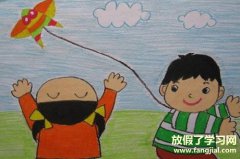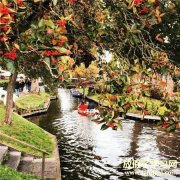现在小学英语人教版从哪年级开始
从一年级就开始学了,这里有一些资料,我们都整理成集,分享给你,希望对你有帮助。 《小学阶段语文、英语、数字、音乐、美术、体育、自然、科学等》百度网盘资源大全 链接:https://pan.baidu.com/s/1znmI8mJTas01m1m03zCRfQ ?pwd=1234 提取码:1234 对于小学阶段所涉及到的各科各类资料,我拍改们都收集、归类并定期更新。欢迎有需求的家长、老师收藏。
现在小学英语人教版从1年级开始。 一、使用年级不同人教版PEP是小学三年级开始到小学毕业使用的。人教版是包括所有年级。二、两者版本不同:这两个版本名称均是配合由人民教育出版社出版的教科书的报纸,是新课改前后的版本名称。随着新课改的深入,前者逐渐退出历史舞台,已经很少使用和出现了。后者便是为了统一称为人教版。
现在小学英语人教版从1年级开始。 一、使用年级不同人教版PEP是小学三年级开始到小学毕业使用的。人教版是包括所有年级。二、两者版本不同:这两个版本名称均是配合由人民教育出版社出版的教科书的报纸,是新课改前后的版本名称。随着新课改的深入,前者逐渐退出历史舞台,已经很少使用和出现了。后者便是为了统一称为人教版。

新人教版六年级英语知识点总结
随着小学英语教学日益为国家和全社会所重视,在许多地方的小学英语已经成为了一门必修课。新人教版六年级英语有哪些知识点呢?接下来我为你整理了新人教版六年级英语知识点总结,一起来看看吧。 新人教版六年级英语知识点:句型 1. allow sb to do sth 允许某人去做某事(后接动词不定式) My father allowed me to go out for a walk after finishing my homework. 2. asked sb (not) to do sth 叫某人做事某事(叫某人不要去做某事) My father asked me to study hard. He asked me not to swim alone. be asked to do sth 被叫去做某事/被邀请去做某事 I was asked to have a dinner with them yesterday. 3. be afraid to do sth 害怕做某事 She is afraid to ask me questions. 4. be afaid of doing sth 害怕做某事 I am afraid of going out at night. 5. be afaid of sth 害怕某物 He is afraid of snakes. 6. be amazed to do sth 对做某事感到惊讶 He was amazed to meet the girl there. be amazed at sth 对某事感到惊讶 they were amazed at the news. 7. be busy doing/with sth 忙于做某事(常考) I was busy washing my car at that time. 那时候我正忙于清洗我的车子。 I am busy with my work. 8. be coming/going/leaving/fiying/moving/dying(某些位移动词用进行时态时表将来) the bus is coming/the dog is dying. 9. be excited to do sth 对做……感到兴奋 Jacky was excited to travel there by plane. be excited at sth Lily was excited at his words. be excited about doing sth he was excited about passing the exam without going overing books. 10. be frightened to do sth 害怕去做某事 Sam is frightened to ride a horse. 11. be glad/happy to do sth 高兴去做某事 She is happy to clean theblackboard with me. be pleased to do sth高兴做某事 She was pleased to helpthe old man yesterday. be pleased with sth 对某事感到高兴/满意 The teacher was pleasedwith my answer. 12.be interested in sth/doing sth 对某事感兴趣/对做某事感兴趣 She is interested inswimming in the river. My btother is interestedin Chinese. 13. be/get ready for/to do sth be ready for 为某事做好了准备 We are ready for the exam. Be ready to do sth 为做某事做好了准备 We are ready to have a birthday party for her. get ready for sth为某事在做准备 We are getting ready for the exam. 14. be surprised to do sth 对做某事感到惊奇 be surprised at sth 对某事感到惊奇 This is nothing to be surprised at. I'd be surprised to see him on such an occasion. 15. be worth doing sth 值得做某事(worth 后接动词-ing形式,常考) It was too remote to be worth thinking about. 16. begin to do sth begin/start to do/doing sth开始去做某事 When do children begin to go to school? 17. can/be able to afford (to buy) sth 有能力负担(购买)…… At this rate we won't be able to afford a holiday. 18. can/may/must do sth 能/可以/必须做某事 could/would/should/might do sth 能/将/应该/可以做某事 We may come at another time. 19. can't wait todo sth 迫不急待地去做某事 I can’t wait to hear the news. 20. decide to do sth 决定去做某事 make up one's mind to do sth 下决心去做某事(常考) make a decision to do sth 对做某事作出决定 What do they decide to do? I have made up my mind to go with him 新人教版六年级英语知识点:be动词的用法口诀 be 的用法口诀 我用am,你用are,is连着他,她,它; 单数名词用is,复数名词全用are。 变疑问,往前提,句末问号莫丢弃。 变否定,更容易,be后not莫忘记。 疑问否定任你变,句首大写莫迟疑。 be动词的用法:be (be/is/are/am/was/were) 现在时 I am, you are, he is, we are, you are, they are (缩略式 I'm, you're, he's, we're, you're, they're), (否定缩略式 I'm not, isn't, aren't), 过去时 I was, you were, he was, we were, you were, they were (过去时否定缩略式 wasn't, weren't), 过去分词been, 现在分词being 英语的“be”是个特殊动词;有些语言,如马来文等,并没有“be”这样的动词。 “Be”除了原形的“be”之外,还有另外七种形式:am, is, are, been, being, was, were. 在句子中,“be”可以是主动词(The Principal Verb)或助动词(The Auxiliary Verb) 例句对照 【当主动词时,“be”在性质上属于接系动词(The Linking Verb), 后面要有名词、形容词、地方副词或短语作补足语(The Complement)。例如: 1. The man is a science teacher. 这个男子是一位科学教师 2. Mary's new dresses are colourful. 玛丽的新衣服色彩鲜艳 3. I have been there before. 我以前去过那里 4. My mother is watching TV in the room. 母亲现在在客厅看电视 【这四个都是陈述句,可以变成疑问句,方法简单,把主语和“be”或助动词对换位置即可: 5. Is the man a science teacher? 6. Are Mary's new dresses colourful? 7. Have I been there before? 8. Is mother in the kitchen now? 【当“be”要在祈使句中出现时,它必须借重助动词“do”或“don't”之助,如: 9. Don't be silly! 10. Do be obedient! 11. Don't be a fool! 【“Be”有两种缩写法,如下: 12. He's not...../He isn't.... 13. You're not...../You aren't... 【但“am + not”的缩写法只有一个: 14. I'm not. 有人用“ain't”, 但这并不是标准英语。 谈过了“be”作主动词的功能,现在看看“be”作助动词时,有些什么用法: 【1.】“Be + 现在分词”以组成进行式时态(Continuous Tenses),如: 15. Tony's maid is washing his new car. 16. The children are playing in the field. 17. Samuel was eating when I came in. 18. We have been living here since 1959. 【2.】“情态动词+Be + 过去分词”以组成被动语态(The Passive Voice),如: 19. Her money in the drawer was stolen. 20. A number of good jobs are taken up byforeigners. 21. David studied in Taiwan but has been trained as a language lecturer in America. 22. Can all the wonderful birds be found in our Bird Park? 23. The disobedient boy was told to stand out- side the classroom. 24. Steps are being taken to reduce traffic con- gestion during peak hours. 25. Dishonest students will be immediately dealt with. 新人教版六年级英语知识点:定语从句中关系代词 六个关系代词是:that/which/ who/ whom/ whose/ as , 注意关系代词在定语从句中做主宾表定语。 which表物人用who,人物都有that顾; 先行词是物,关系代词用which,也可以用that;先行词是人,关系代词用who,也可以用that;先行词中既有人,又有物,关系代词只能用that。 例句 1) This is the mountain village (which/ that ) I visited last year. 这就是我去年参观的那个山村。 解析:先行词mountain village是物,可用which或that, 因为定语从句中visit后缺宾语,说明which或that应该在定从中做宾语,所以还可以省略。 例句 2)The man(that/whom / who ) you met just now is my friend. 你刚刚见到的那个人是我的朋友。 解析:先行词man表人,关系词可以用who/that/whom,因为定语从句中缺宾语,关系代词应该在定语从句中做宾语,所以可以省略;另外,whom是专门用来做宾语用的,而who则只是在口语中才用。 例句 3)This magazine belongs to the teacher who(that) teaches us history. 这本杂志是我们历史老师的。 解析:先行词teacher是人,关系代词用who或that, 因为在定语从句中做主语,所以不能省略。 例句 4)He talked about the teachers and schools (that) he had visited. 他谈到了他所见到的老师和学校。 解析:先行词 the teachers and schools 中既有人又有物,关系代词只能用 that, 又因为that在定语从句中做宾语,所以又可以省略。 which用在逗号后,意表前句你要know; 这是which用在非限制性定语从句中的一个用法。 例句1)He seems not to have grasped what I meant, which greatly upsets me. 他似乎没抓住我的意思,这使我心烦。 解析:which是关系代词,指代前面的一句话:他似乎没抓住我的意思。 例句2)Liquid water changes to vapor, which is called evaporation. 液态水变为蒸汽,这就叫做蒸发。 解析:which是关系代词,指代前面的一句话:液态水变为蒸汽。 who做主语很称职,whom用到宾语里; 先行词是表示人的词,定语从句中如果缺主语,要用who做关系代词,如果缺宾语,正规场合下用whom, 口语中也可以用who。 例句 1)He is the boy who often goes to school late. 他就是那个经常上学迟到的男生。 解析:先行词the boy 指人,后面的定语从句中缺少主语,因此用关系代词who。 例句 2)She is the old woman whom I saw this morning. 她就是我今天早晨看到的那位老太太。

小学英语苏教版和人教版的区别
苏教版和人教版是两种不同版本的学生用教材,中小学生使用的教材版本不尽相同,有的省份给学生用的是人教版,有的是苏教版。江苏省在教育中是还可以的,所以使用的教材肯定也是较先进的。江苏的学生用苏教版的教材多。苏教版和人教版,主要区别有: 1、出版社不一样。一般情况下说的。,苏教版谁有江苏教育出版社出版的?人教版。是由人民教育出版社出版的。 2、范围不一样。广义上的苏教版教材不仅包括:江苏教育出版社出版的教材,还有意林出版社的,江苏科技出版社的,江苏少儿出版社,以及江苏人民出版社等等教材。 3、内容不完全一样,大同小异,深浅程度都是相当的,我知是道覆盖范围,也是大同小异。 4、使用的地区不一样。如苏教版教材除了在江苏。使用外在。在山西,安徽,陕西,广东等地均有使用。小学均为江苏教育出版社教材。 5、江苏在教育中跑在较前列的。所以,教材的编写也有的水平,许多省市都惠用。 6、除了教材的好的好,好的性好外,我们不讳言有区域限制,也有利益驱使。 综上所述,所以江苏都用苏教版。
人教版还是不错的,但是有些内容解释的过于简单。苏教版的内容解释比较到位。但是知识的编排比较乱.人教版是我国教育书系列的领头羊,苏教版后来出现,有猛追之势。人教版全国都在用,苏教版主要应用于某些省份,比如说山西等地现在开始逐步应用。对于老师来说,用人教版你费的心思稍微多一点,得逐步引导学生去学习。苏教版内容解释比较到位,适合培养学生的独立自学能力。但是它也有相对不成熟的地方,那就是只是编排比较乱。作为老师,你自己看着挑选那种教材比较适合你的教学风格,二者基本没有太大的差别。
人教版还是不错的,但是有些内容解释的过于简单。苏教版的内容解释比较到位。但是知识的编排比较乱.人教版是我国教育书系列的领头羊,苏教版后来出现,有猛追之势。人教版全国都在用,苏教版主要应用于某些省份,比如说山西等地现在开始逐步应用。对于老师来说,用人教版你费的心思稍微多一点,得逐步引导学生去学习。苏教版内容解释比较到位,适合培养学生的独立自学能力。但是它也有相对不成熟的地方,那就是只是编排比较乱。作为老师,你自己看着挑选那种教材比较适合你的教学风格,二者基本没有太大的差别。

英语六年级上册知识点人教版
有用的知识才是真正的知识,知识的实用才有价值意义。智商的高低体现知识多少,情商的高低体现能力的大小。下面我给大家分享一些英语六年级上册知识人教版,希望能够帮助大家,欢迎阅读! 英语六年级上册知识人教版1 How do you feel ? 一、主要单词: angry生气的 afraid害怕 worried担心的;发愁的 happy高兴的 see a doctor看病 more更多的 wear穿 deep深的 breath呼吸(名词) count数数(动词) sad难过的 二、习惯搭配: feel angry/ill/happy/sad感觉生气/不舒服/高兴/难过 be afraid of...害怕··· be angry with...与···生气 take a deep breath深深吸一口气 count to ten 数到十 see adoctor看病 do more exercise做更多的运动 wear warm clothes穿暖和的衣服 chase the mice追赶老鼠 drink some drinks喝一些饮料 have some popcorn吃一些爆米花 三、惯用表达式: Here you are.给你。 Wait for me.等我一下。 Yum!太美味了! 四、公式化句型: 1、描述某人/某物害怕什么的句型: 主语+be动词+afraid of +其他. ···害怕···。 2、描述某人/某物与什么生气的句型: 主语+be动词+angry with+其他. ···与···生气。 3、询问某人怎么了的句型及其答语: 问句:What’s wrong? What’s the matter(with you)? 怎么了? 答语:某人+所处的状况。 4、建议某人应该做某事的句型 某人+should +动词(短语)原形+其他. ···应该···。 take a deepbreath count to ten see a doctor do more exercise wear warmclothes... 五、做“对句子划线部分提问”试题时,一般应该遵循三个步骤: (1). 确定与句子划线部分相应的特殊疑问词,并且特殊疑问词代替相应的划线部分。 (2). 把特殊疑问词代替划线部分后的句子变成一般疑问句。 (3). 最后再把特殊疑问词提到句首。 以上三个基本步骤可以用三个字来概括,即:定,问,提。 例如: This is a book ? ①This is what. ②Is this what ? ③What is this ? 注意:句①②只是一种变化过程,不必写入试题中。句③才是试题所要求的形式和结果,必须写到试题上。以上三个步骤是对句子划线部分提问最基本的过程。 六、主题写作:范文 WhatShould You Do? When you fell sad or worried,what should you do ? Let me tell you.Firstyoushould take a deep breath .Then you should listen to some music.Next youwill berelaxed.You won’t be so sad or worried.When you are afraid,what shouldyou do?It’s easy.You should ask your friends for help.If you have friends withyou,youwon’t feel afraid.Try to be happy every day. 英语疑问词what,how,who,why,where,when的用法. 一、what 什么 用来问是什么,叫什么,做什么等 1. What’s your name? 你叫什么名字? 2.What is in your box? 你的盒子里是什么? 3. What’s your father?=What does your father do? 你爸爸是干什么的? 一)What time 什么时间 用来问时间 What time is it? 几点了? 二)What colour 什么颜色 用来问颜色 Whatcolour is your bag? 你的书包是什么颜色? 三)What about 怎么样 用来征求意见或询问感受等,大多用于承接上面的同样问题。 1.What bout this pair of shoes? 这双鞋子怎么样? 2.What about you? 你呢? 3.What about your dad? 你爸爸呢? 四)What day 星期几 用来问星期几 What day is it today/tomorrow? 今天/明天星期几? 五)What date 什么日期 问具体的日期 1.What’s the date today? 今天是几号? 2. What date is tomorrow? 明天是几号? 六)What …for 为何目的 用来问目的,在一定情况下可以与why互换 What did you buy that for?=Whydid you buy that? 你为什么要买那个? 二、when 什么时候 用来问时间 When do you get up?你什么时候起床? 三、where 哪里 用来问地点 1. Where is my ruler? 我的尺子在哪里?2. Where are you going to ? 你打算去哪里? 3.Where are you from? =Wheredo you come from? 你是哪里人? 四、which 哪一个 用来问具体的哪一个 1. Which season do you like best? 你最喜欢哪个季节? 2.Which class are you in?你在哪一个班? 3.Which one is my pen?哪一支是我的钢笔? 五、Who 谁 用来问人物是谁 1.Who is that boy?那个男孩是谁? 2. Who are you going to with? 你打算和谁一起去? 3. Who is that pretty lady?那个漂亮的女士是谁? 六、whose 谁的 用来问东西是谁的 1. Whose bag is this? 这是谁的包? 2.Whose bike is yellow? 谁的自行车是黄色的? 七、 why 为什么 用来问原因 1.Why do you like spring? 你为什么喜欢春天? 2. Why did you go there? 你为什么去那里? 八、 how 怎么样 用来询问身体等状况 1. How are you? 你好吗? 2. How is your mother? 你妈妈好吗? 一)How old 几岁 用来问年龄 How old are you? 你几岁了? 二)How long 多长 用来问长度 How long are your legs? 你的腿多长? 三)How big 多大 用来问物体的大小 How big is your bedroom? 你的卧室多大? 四)How tall 多高 用来问高度 How tall is your brother? 你弟弟有多高? 五)How heavy 多重 用来问重量 How heavy are you? 你有多重? 六) How far 多远 用来问路程 2 How far is it from here? 从这儿去有多远? 七)How many 多少 用来问数量 How many apples do you have? 你有多少苹果? 八)How much 多少钱 用来问价格 how much is this dress? 这个连衣裙多少钱? 九)How about 怎么样 用来征求意见或询问感受等,大多用于承接上面的同样问题,用法与what about相同 1. How about you? 你呢? 2. How about that shirt? 那件衬衣怎么样? 英语六年级上册知识人教版2 How can Iget there ? 一、主要单词: museum博物馆 bookstore书店 cinema电影院 turn 转弯 hospital医院 left向左 post office 邮局 science科学 right向右 straight笔直地 crossing十字路口 二、习惯语搭配: post office邮局 science museum科学博物馆 pet hospital宠物医院 Italian restaurant意大利餐馆 Beihai Park北海公园 Palace Museum故宫博物院 go straight直走 turnright/left右/左转 next to挨着 in front of...在...前面 near the park在公园附近 on Dongfang Street在东方大街上 三、惯用表达式: Excuse me 打扰一下 Follow me, please!请跟着我! 四、公式化句型: 1、问路的句型及其答语: 问句:Where isthe + 地点? ···在哪儿? 答语:It’s + 表示地点的词语。 它···。 next to the bookstore, near the hospital/post office, over there, on DongfangStreet, in front of the school... 2、询问怎么到某地的句型及其答语: 问句:How can +主语 + get (to)+地点? ···怎么到···? 同义句型: Can you tell me the way to +地点? Where is + 地点? Which is the way to +地点? 答语:Turn +方向+表示地点的介词短语。 ···转。 at the cinema at the corner near the post office... 五、例句: Where is the cinema, please? 请问电影院在哪里? It’s next to the hospital. 它与医院相邻。 Turn left at the cinema, then go straight. It’s on the left. 在电影院向左转,然后直行。它在左边。 Turn left at the bank。 在银行左转。 六、主题写作:范文 Howto Get to the Science Museum We are going to the science museum tomorrow.The science museum is nexttothe hospital.It’s not far from our school.So we can go there onfoot.First,gostraight from our school.Next,turn left at the post office andwalk for aboutfive minutes.Then turn right at the bookstore.We can find thehospital on theright.Walk straight,and we’ll see the science museum. 英语六年级上册知识人教版3 Ways to go to school 一、主要单词: by乘 bus公共汽车 on foot步行 plane飞机 taxi出租车 ship(大)船 subway地铁 train火车 slow慢的 stop停下 always 总是,一直 usually 通常 often经常 sometimes 有时候 never 从来不 二、习惯语搭配: by bike/bus/plane/subway/train/ship/taxi/ferry 骑自行车/乘公共汽车/飞机/地铁/火车/船/出租汽车/渡轮 take the No.57 bus乘57路公共汽车 on foot步行 slow down慢下来 pay attention to注意trafficlights 交通信号灯 look right向右看 cross the road横穿马路 get off下车 at home在家 traffic rules交通规则 get to到达 get on 上车be far from…表示离某地远 三、惯用表达式: Wait!等一等! Hooray太好了! I see. 我明白了。Go at a green light 绿灯行 Stop at a red light 红灯停 Wait at a yellow light 黄灯等 四、公式化句型: 1、如何询问对方的出行方式: How do you come(to)+地点? 你(们)怎么来···的? 2、如何用must表示必须做某事: 某人+must+动词原形(+其它). ···必须···。 3、告诫别人不要做某事的句型: Don’t +动词原形(+其它). .不要/别···。 五、例句: How do you go to school? 你怎么去上学? Usually I go to school on foot. Sometimes I go by bus. 通常我步行去上学。有时候骑自行车去。 How can I get to Zhongshan Park ? 我怎么到达中山公园? You can go by the No. 15 bus. 你可以坐15路公共汽车去。 I am far from school now. 我现在离学校很远。 My home is not far from ourschool. My home is near our school. 我家离学校不远。 六、主题写作:范文 Don’t Be Against the Traffic Rules I go to school from Mondays to Fridays. Igo to school by bike at 7:30 inthe morning.I have to cross two busy roads.Iknow the traffic rules well.Slowdown and stop at a yellow light.Stop and waitat a red light.Go at a greenlight.I always ride on the right side of theroad.I am never against the trafficrules. 英语六年级上册知识人教版4 I have a pen pal 一、主要单词: studies学习(第三人称单数形式) puzzle谜 hiking远足 二、习惯搭配: read stories读故事 do kungfu练功夫 fly kites放风筝 play the pipa弹琵琶 play sports进行体育活动 climb mountains爬山 listen to music听音乐 sing English songs唱英文歌 on a farm在一个农场里 live in...住在··· write an email to...给···写一封电子邮件 on the playground在运动场上 三、惯用表达式: Me too.我也是。 Really?真的吗? 四、公式化句型: 1、询问某人爱好的句型及其答语: 问句:What are sb.’s hobbies? ···有什么爱好? 答语:主语+like/likes+动词-ing形式(+其它). ···喜欢···。 Singing dancing reading stories playing football doing kungfu doing wordpuzzles going hiking watching TV drawing cartoons listening to music goingfishing 2、由do/does引导的一般疑问句及其答语: 问句:Do/Does+主语+动词原形+其它? 答语:Yes,主语+do/does. /No,主语+don’t/doesn’t. 五、语法: 1、动词变为动名词的规则: 动词变为动名词,即是动词加ing。一般要遵循以下三条规则: (1)一般情况下,在动词的后面直接加ing。如: play—playing read—reading do—doing go—going (2)以不发音的字母e结尾的动词,要去掉不发音的字母e,再加ing。如: write—writing ride—riding make—making dance—dancing (3)以单元音加单辅音结尾的重读闭音节,要双写最后一个辅音字母,再加ing。如:run—running swim—swimmingput—putting sit—sitting 2、关于第三人称单数: 动词变为第三人称单数形式的规则: (1)在一个句子中,如果主语人称既不是你,也不是我,而是另外的一个人,这时的人称叫做第三人称单数。 (2)在第三人称单词的句子中,动词要使用第三人称单词形式。 (3)动词变为第三人称单数形式,要遵循以下规则: ①一般情况下,在动词的后面直接加s。如: read--reads make—makes write—writes ②以字母s, x, o , sh , ch结尾的动词,在词尾加es。如: do—does wash—washes teach—teaches go—goes pass—passes ③以y结尾的动词分为两个情况,以元音字母加y结尾的动词,在词尾直接加s。如:play—plays buy--buys 以辅音字母加y结尾的动词,要把y变为i,再加es.如:study--studies ④以f , fe结尾的名词,先把f,fe变为v,再加-es. ⑤特殊变化:have--has (4)在一个第三人称单数的句子中,只要句子中出现了does或者其否定形式doesn’t.该句子中的其他动词就要使用原形。 (5)第三人称单数的肯定句在变为否定句时,在动词的前面加doesn’t. 动词恢复原形。如:he lives in Beijing.---hedoesn’t live in Beijing. (6) 第三人称单数的陈述句在变为一般疑问句时,用does开头,后面的动词也要变为原形。如:he lives in Beijing.---Doeshe live in Beijing? 3、注意几个单词的变化: hobby(复数形式)—hobbies have to(同义词)—must 六、反义词或对应词: get on(上车)---get off(下车) near(近的)—far(远的) fast(快的)—slow(慢的) because(因为)—why(为什么) same(相同的)—different(不同的) here(这里)---there(那里) east(东)---west(西) north(北)---south(南) left(左)---right(右) get on (上车)---get off(下车) 近义词: see you---goodbye sure---certainly---of course 七、主题写作:范文 Li Ying’s Hobbies Li Yinglikes English very much.She works hard at it.She reads Englisheverymorning.She likes speaking English .She likes listening to theradio,too.Shewatches TV only on Saturday evening. Does shelike cooking Chinese food?No, she doesn’t.She likes doing wordpuzzles.Shedoesn’t like playing basketball.Her parents love her.All the teachersloveher,too.She says her hobbies make her happy. 英语六年级上册知识人教版5 What does he do? 一、重点单词: factory工厂 postman邮递员 police officer警察 fisherman渔民 scientist科学家 pilot飞行员coach教练 businessman商人;企业家 worker工人 二、习惯搭配: by car/bus/bike/plane/boat乘小汽车/公共汽车/自行车/飞机/船 go to work去上班 study hard 努力学习 stay healthy保持健康 go home 回家 lots of 许多 go tothe camp去度假营 be good at...擅长··· 三、惯用表达式: Cool!酷! What about you?你呢? That’s nice.那真好。 I see.我明白了。 四、公式化句型: 1、询问他人的职业的句型及其答语; 问句:What does+主语(第三人称单数)+do? ···是做什么的? 答语:He/She is a /an+职业名称. 他/她是一位···。 worker postman businessman fisherman scientist pilot coach policeofficer salesperson售货员 cleaner清洁工 teacher dancer舞蹈演员 doctor nurse护士 pianist钢琴家 dentist牙医 tailor裁缝 2、询问他人的工作地点的句型及其答语: 问句:Where does+主语(第三人称单数)+work? ···在哪儿工作? 答语:He/She works+(表示地点的)介词短语. 他/她···工作。 at auniversity in a gym at sea on a boat at the zoo in a school in a bank在一家银行 in a car company在一家汽车公司 3、询问他人的上班方式的问句及其答语: 问句:How does +主语(第三人称单数)+go to work? ···怎么去上班? 答语:He/She goes to work+交通方式. 他/她···去上班。 bybike/bus/subway/plane/train/ship/ferry/...on foot 五、一些由动词变化而来的职业名词: teach—teacher clean—cleaner sing—singer dance—dancer drive—driver write—writer TV report—TV reporter act—actor act—actress art—artist engine—engineer 六、主题写作:范文 ILove My Family Here is a photo of my family.There are four people in my family.They aremyfather,my mother, my brother and me. My father is a doctor.He works in a hospital.He goes to work bysubway.Mymother is a teacher.She works in a school near my home.She goes towork bybike.Look, the tall boy is my brother.He is older than me.He is apilot.He’s inBeijing now.He goes there by plane.I am a student now. I love my family. 英语六年级上册知识点人教版相关文章: ★(PEP)小学六年级英语上册知识汇总 ★人教版PEP小学英语六年级上册教材解读 ★六年级英语知识点大总结 ★六年级英语上册第六单元知识点总结 ★六年级英语语法知识点汇总 ★人教版小学英语知识点 ★小学六年级英语学习方法和技巧大全 ★2019秋人教版PEP小学英语六年级上册教材解读 ★六年级英语知识点归纳总结 ★英语学习:小学英语六年级上册期末复习提纲

人教PEP和人教版英语有什么区别?
区别1、不同的教学内容。 人教PEP这是一本由人民教育出版社出版的英语教科书。这本教科书是为三年级开始用的。人教版是小学、小学英语学生用书,也可以说人教版是人教版的一个分支。而人教版精通有各科,教学内容较为全面。 区别2、不同的教学要求。 pep中华人民共和国教育部专业出版社直属。主要承担基础教材及其他各类教材、教辅图书的学习、编写、出版和发行工作。而人教版精通设有语文、数学、外语等20多个学科编辑室、课程材料研发中心。 区别3、不同的教材的难易程度。 PEP小学三年级英语的出发点是人民教育出版社出版的教学工作,用精彩的动画故事和儿歌生动地展示了语言情境,让孩子们看得开心,学得轻松。而人教版精通的它是从小学一年级到高中都有教材,贯穿整个学习生涯,难易程度都是由易到难。





